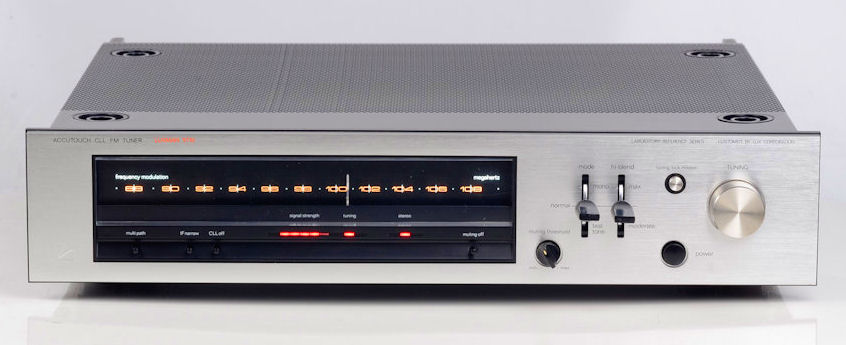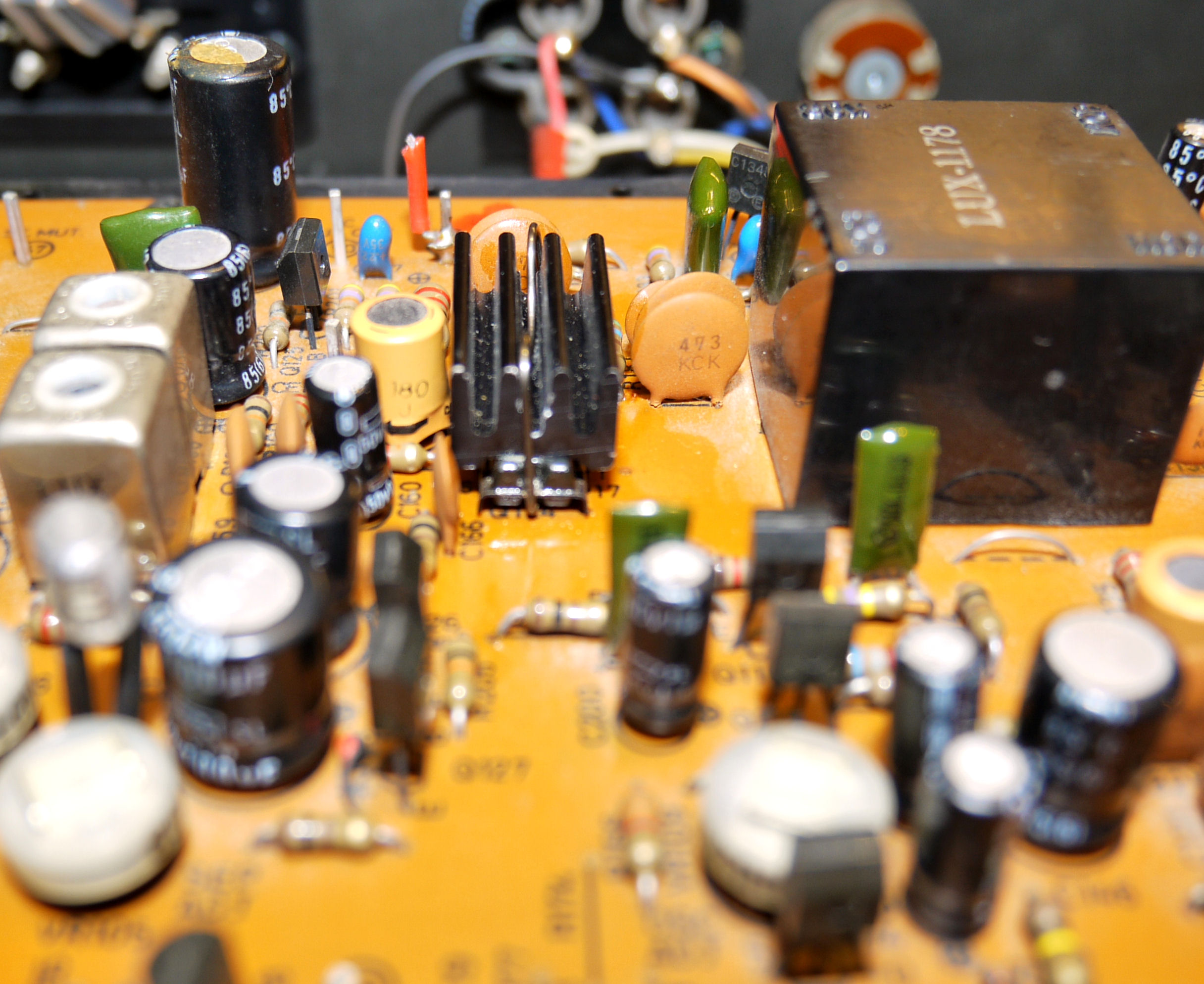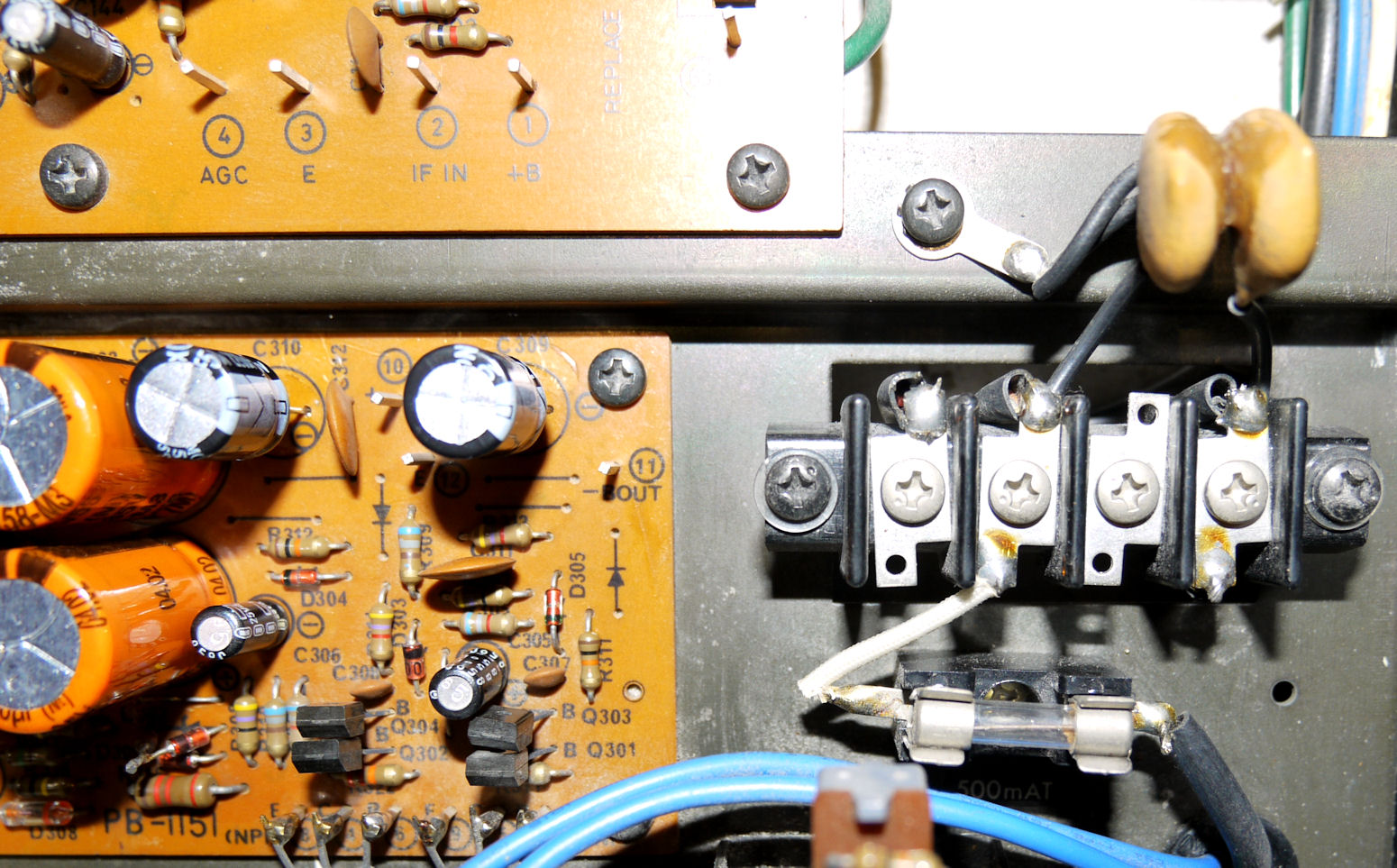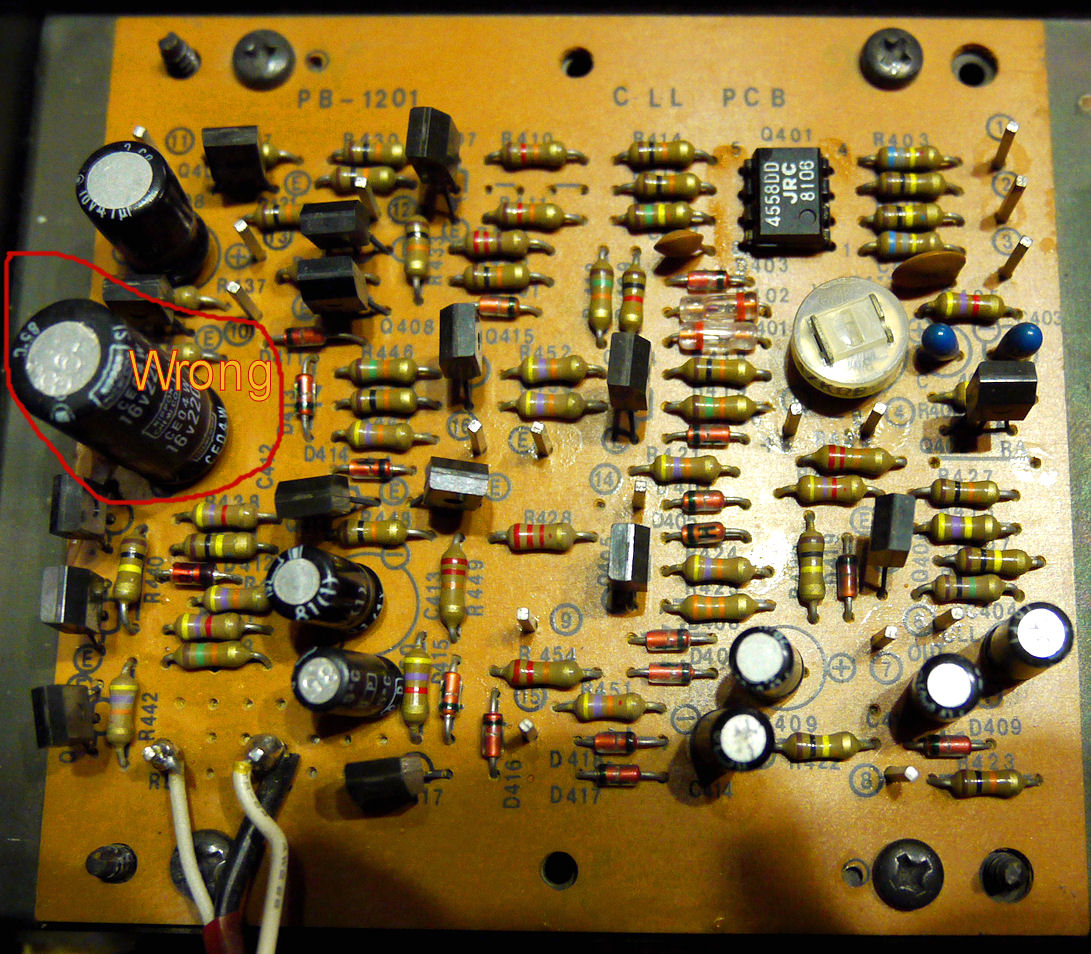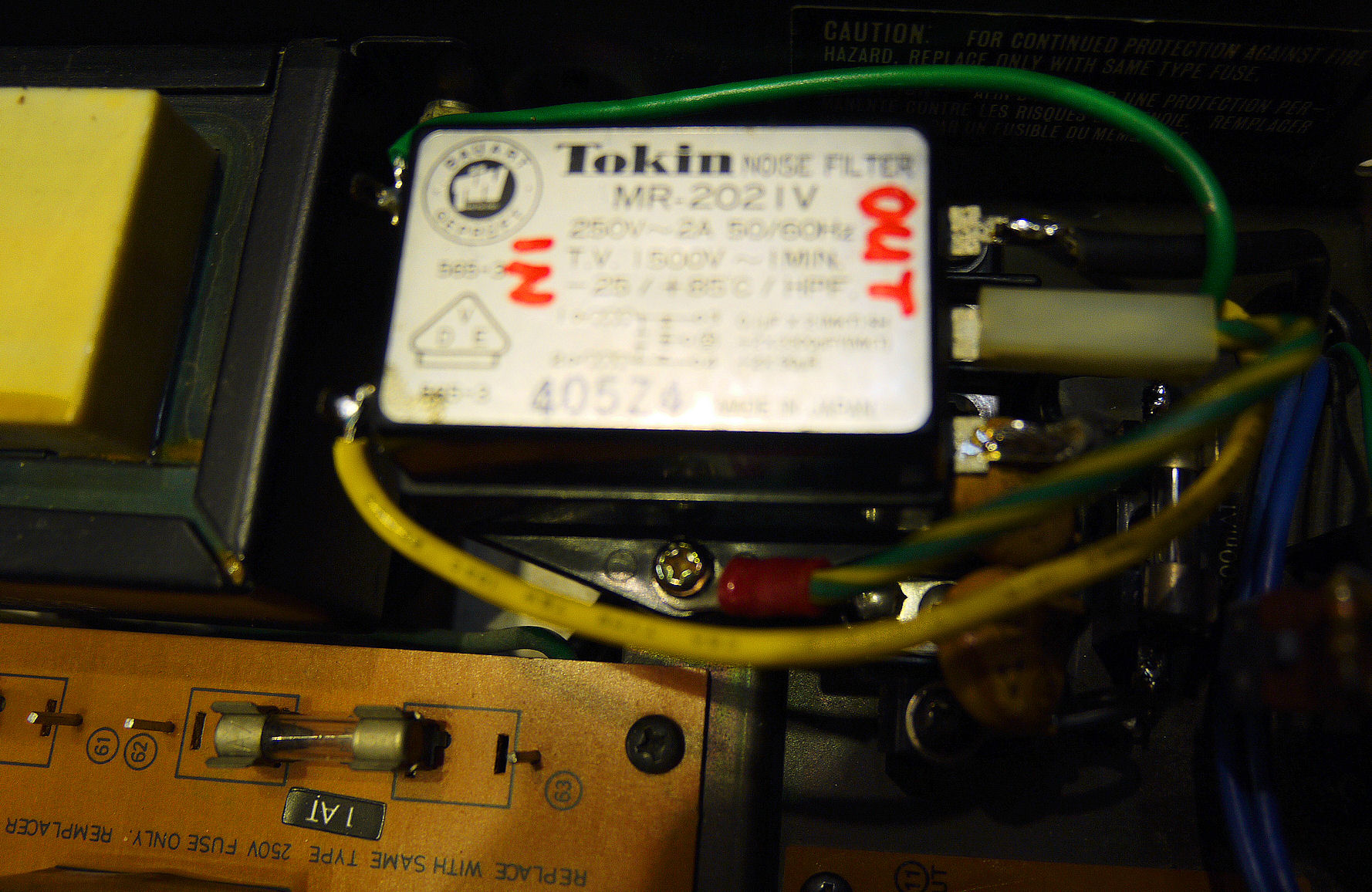![]()
General:
This Tuner was produced by Luxman Japan in 1978. This is one of the best tuners Luxman ever made.
Generously build and it has outstanding reception capabilities and sound is excellent.
It incorporates great lineair filters in the MF section.
It has some special features, like CLL, switchable MF bandwidth and lock of the tuning knob.
Special futures:
Relay actuated CLL lock control.
User Manual:
Click here to download the manual PDF format
Interior ^
Heatsinking the discriminator IC ^
Schematic:
Click here to download the schematic diagram of the Luxman 5T10 in PDF format
Modifications:
All electrolytic capacitors in the power supply can be replaced.
Some capacitors can be added to the power supply rail through the tuner to improve stability.
C193 of 3.3 uF can be replaced. Also C185 and C186, a better quality cap may improve the sound.
The HA11211 discriminator IC can get defective and must be replaced in some cases, one of the
major symtoms in that case is, that there is no centre tuning possible anymore: the centre tuning lamp stays off.
Also the CLL is often not working properly anymore in the same case.
A small heatsink on top of the IC is possible, I used a common IC heatsink with thermal grease.
Also a anti birdies filter is employed by some local distributors as in the model above,
can be subject to upgrading or modification. (Audioscript Netherlands)
More simple and also effective anti birdies filters are possible. (Sherwood USA, Denon Japan)
On most of the anti-birdies filter boards low grade caps are used, you may replace them with high grade ones.
I made a modification to this little additional board, that made the sound even better.
Leaving it out of the circuit is the best solution, but your local FM reception situation must allow this.Users in Europe must consider to change the mains transformer tap used for the mains connection, it is historically set to 220V.
But since Europe is increasing main voltage to detrimental 240 V over a 20 years time frame, and now being on plus 230 V ~.
So using the 240 V tap is the most sane thing to do now.The Hitachi IC's suffer the same silver creaping desease as their old transistors,
consequently the mpx stereo-decoding IC HA11223 may brake down due to this phenomenon.A very strange thing was this: I experienced that this 5T10 was suffering from instable signal strengths,
the S-meter went from S9 to very low signals S1 or S2, I tried all usual things and nothing brought a clue.
After a thorough search I came to the conclusion that the coax wire between the front-end and the antenna terminals
appeared to be the source of the problem, I desoldered the coax wire, connected the antenna straight to the
frond-end and there was a stable full S9 signal.
This coax obviously was very aged and decayed, and sqweezing this wire gave strange effects.
So I installed a new 75 Ohms coax and now all sensivity and S-meter trouble is history.
After this experience I remembered that many years ago I had a Luxman T12 here with the same problem.On PB 1201, the CLL pcb there is a problem: look at the photo.
The decayed coax wire from front-end to antenna terminal ^
Setting the Voltage to 240 in Europe ^
Wrong polarity indicated on the pcb ^
Installed: Noise filter ^
Sound:
Outstanding
LUXMAN
![]()
